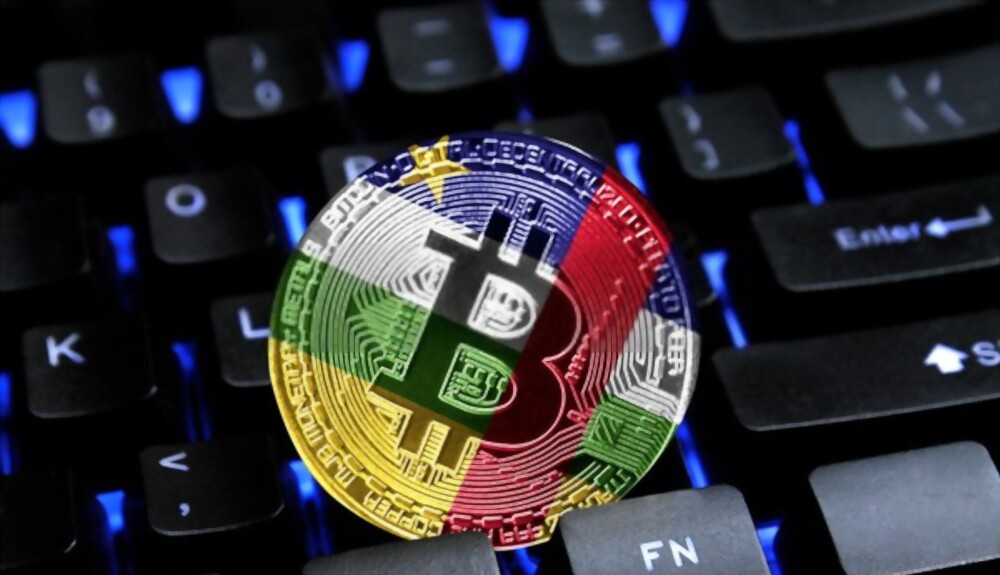
Sequel to its adoption of Bitcoin as a legal tender, the Central African Republic appears willing to integrate crypto into its financial system.
Following its recent adoption of Bitcoin as a legal tender, the Central Africa Republic has continued to embrace digital assets. The Presidency has revealed that it will launch the continent’s first legal cryptocurrency investment hub.
However, the government is yet to provide full details regarding its Bitcoin vision. Nonetheless, a website has been set up for the soon-to-be-launched “SANGO” crypto venture, where interested investors can sign up for a waiting list.
Bitcoin Move Puzzles Observers And Citizens
The CAR’s decision to adopt Bitcoin as a legal tender has raised eyebrows amongst crypto enthusiasts globally, politicians and citizens of the nation. Marred with inadequate electricity and low internet use, the gold and diamond-producing country seems ill-equipped to handle such an endeavour.
Consequently, the IMF, which has vehemently opposed the use of Bitcoin as a legal tender, has kicked against the CAR’s decision. The monitoring body labelled the move a bad one and warned that embattled countries should not see cryptocurrency as an easy route out of harsh economic conditions.
Previously, the IMF had urged El Salvador to ditch its Bitcoin use. Meanwhile, it has vehemently supported the use of CBDCs. The international organisation believes that CBDCs offer a better bet within the current macroeconomic conditions for any country considering digital assets.
Similarly, Central Africa’s regional banking regulator sent out a reminder concerning its ban on cryptocurrencies. The Banking Commission of Central Africa (COBAC) regulates the banking sector in the six-nation Economic and Monetary Community of Central Africa (CEMAC). It stated that the prohibition was meant to ensure financial stability.
CAR Turns To Digital Assets Amidst Financial Crisis
The CAR is the second country globally and the first African nation to adopt Bitcoin as its legal Tender. Like El Salvador, the rising financial crisis, including high debt levels and slow economic growth, have pushed it towards digital assets.
Source: Statista
As seen above, data from Statista shows that CAR’s national debt has continued to rise steadily since 2016, with 2020 as the exception. The deficit, already worth over a billion dollars, is predicted to continue to grow until 2026, with an estimated value of $1.26 billion. This represents a significant increase of nearly 20% over the decade.
Central African Republic: Growth rate of real gross domestic product (GDP) from 2017 to 2027. Source: Statista
Also, the gold-producing country has been affected significantly by a declining growth rate over the past couple of years. The growth rate of its GDP has been falling since 2017 and reached significant lows in 2020 and 2021.
However, the outlook is better in 2022, with a significant jump expected from 0.98% to 3.54%. Nonetheless, the projected growth is a mere 1.12% over the following years, seeing the nation surpass its 2017 levels slightly.
The majority of issues faced by the CAR have resulted from decades of political instability, violence and natural hazards. This has severely weakened the government’s authority while ensuring that necessary infrastructure cannot be provided.
Despite its decision and immediate opposition from regulatory bodies, it is yet to be seen how the CAR would implement its Bitcoin plan. Observers, citizens and the crypto community would have to remain patient as the government comes up with a framework to allow digital assets within the country’s financial system.
Do you think creating an investment hub for cryptocurrencies is a viable move for the CAR despite the opposition to its Bitcoin adoption? Let us know your thoughts in the comments below.

Chris is a crypto enthusiast and a firm believer in the blockchain’s ability to create a new financial paradigm. Through writing, Chris hopes to expose the intricacies of this disruptive technology and how it is beneficial to Africans and developing countries. He aims to give readers a rational and unbiased outlook of the industry by equipping them with the necessary information to make enlightened investment decisions.


